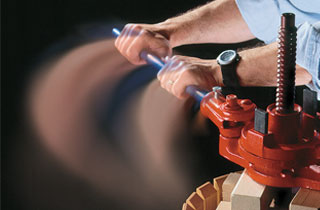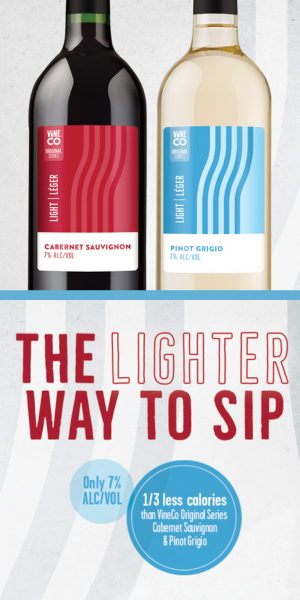 As home winemakers, there’s nothing like adding a new trick to our repertoire. Anything that makes our wine a little better is definitely a good thing. For those reasons, you should explore the trick of making “second run” wines. This is the art of drawing as much color and flavor off the grape skins as possible, even after the press is over.
As home winemakers, there’s nothing like adding a new trick to our repertoire. Anything that makes our wine a little better is definitely a good thing. For those reasons, you should explore the trick of making “second run” wines. This is the art of drawing as much color and flavor off the grape skins as possible, even after the press is over.
Don’t let the elusive name “second run,” or any negative things you may have heard about it, scare you away. This is legitimate winemaking. Second runs have been used around the world throughout the history of winemaking.
There’s nothing mysterious about the second run. It starts with the initial press, during which you gather the best fermentable juice from your fruit. You get as much as you can, eventually calling it quits and (hopefully) congratulating yourself on a solid yield. But there’s plenty of juice, color and flavor still trapped in those skins. How do you get it?
A “second run” is the answer. You do this by making some additions to your must before a second press. Or, for the purist, there is another technique that makes a second press unnecessary.
Making “second runs” is something you can do every time you put together a batch. This works for red or white wines, with high success rates for almost any style. There is, however, enough downside potential to scare many winemakers away. Be aware that squeezing your must for every ounce of flavor and color means you will extract everything from your grapes. In other words, you will get both the good and the bad, including extra tannins. And the “second run” juice is guaranteed to be of poorer quality than the first. So why bother?
For some home winemakers, the answer involves economics. Grapes come at a premium; we all know that. Getting 100 pounds of grapes shipped directly to your door from California might cost $150 or more. Whether you pick them yourself or buy them from your favorite distributor, you’ll want to squeeze every drop out of that hard-sought fruit.
But mastering the second press will also make you a better winemaker. You’ll learn to increase production without sacrificing quality. It’ll also teach you more about managing different runs of juice, about blending and about fine-tuning the taste of your post-fermentation wine.
How to Make a “Second Run” Wine
We start with your regular collection of grapes, red or white, and the first press. Everything is done normally, though if you are planning on doing a “second run” now is the time to decide. This will help you determine when to stop the first press.
The best rule of thumb is to quit the first press when the juice starts to taste tannic (dry and slightly bitter). Test an occasional sample of the juice as you press, look for subtle changes in quality, and stop before you overwhelm your batch of “first run” juice with bitterness and other displeasing flavors. With this method your yield might seem somewhat low, but you will retain your juice’s integrity. You will also save the less desirable juice for the “second run.”
To conduct the “second run” you will need sugar, water, yeast energizer (nutrient high in nitrogen, potassium and phosphorous) and tartaric acid. These will be added to the freshly crushed grapes after the first run. As a general guideline, I add the following for every two gallons of juice I extracted during the first pressing:
- 1 gallon (3.8 L) of cold water
- 2 pounds (0.91 kg) of regular table sugar (white)
- 2 teaspoons of yeast energizer
- 2 teaspoons of tartaric acid
The water aids in extracting extra flavor and color from the pomace (grape pulp), and the sugar gives the yeast some additional “food” to gobble up during fermentation. The yeast energizer will give the little critters the initial boost to get up and running. The tartaric acid improves flavor and crispness in the finished wine.
Once you add these ingredients, the “second run” follows the same procedure as a regular first run. Simply press the grapes, collecting your juice in any container suitable for fermentation.
Note, however, that the quality of this juice will differ greatly from the first run. You certainly can blend this with your first-run juice, but the best suggestion is to collect this juice separately and ferment it separately (following all the standard operating procedures). Once fermentation is completed, sample the wine. If the flavor is satisfactory, feel free to blend it with your main batch. And whether you blend or not, expect the “second run” batch to be very light bodied. If you age and bottle it separately, it should be ready to drink in a matter of weeks.
It’s important to note that you should not need to add yeast to your “second run.” The pomace possesses enough yeast to spark fermentation, so letting this batch go “au naturel” is a good way to test the power — and flavor — of natural yeast.
The Grape Juice Option
Your options for “second run” winemaking don’t end there. While the above method may be the cheapest, it isn’t necessarily the easiest. Nor will it produce the best wine. Instead, consider purchasing fresh grape juice — something that you would consider fermenting for wine anyway — that fits the style you are making. A good Burgundy juice works well for red wine, for example. Use this juice in place of the above sugar-water mixture. Just add it to the pomace after the first press, and then proceed to press your grapes for the second time.
The juice will contain plenty of fermentable sugars, so there is no need to add more. It also possesses the necessary liquidity to extract more flavor and color from your grapes. A little tartaric acid and yeast would not hurt, of course, and should be added in the amount noted above.
While this method will give you a wine with more flavor and structure to withstand aging, you should note that grape juice will hike your price tag. For this reason I suggest starting with the sugar-water mixture to perfect the “second run” technique. After that, move up to grape juice.
If you insist on using grape juice, another (and likely the best) “second run” technique is to add the juice to your first run — prior to the initial pressing — and then proceed without worrying about a second press. Here’s how it works:
Estimate the amount of first run juice you will yield, figuring you will extract about 2 gallons per case (25 to 27 lbs.) of grapes. Then buy enough grape juice to equal half that total amount. For example, if you expect to yield eight gallons of juice, buy another four gallons of juice.
Then, just add the juice straight to your crush before you even start to press. Proceed with the first run as usual. You will find that using this method gives you first run quality juice without either the hassle of pressing twice or the disappointment of poor quality wine. Though undeniably more expensive than using sugar and water, you end up increasing the yield on your grapes and with more bottles of tasty wine.
The Concentrate Option
If you’re so inclined, you can even experiment with wine concentrates when doing “second runs.” This method is the same as the water-sugar technique described above, except you substitute the concentrate for the sugar. First, reconstitute your concentrate in a large vessel. A stainless steel kettle or fermenter usually works. Using the previously mentioned ratio of one gallon of water for every two gallons of juice extracted, refer to the specific recommendations of your concentrate to determine exactly how much concentrate you should use. For example, if your concentrate requires two gallons of water, and you plan to use four gallons of water (because you will have 8 gallons of first-run juice), you will need two containers of concentrate.
Once reconstituted, just add this mixture to the must. The goal here is to get more grape juice, but also draw flavor and color into your concentrate wine. Press as described above, collecting this run separately from the first run juice. Ferment this second-run juice by itself and determine the quality before any blending.
Note: Do not add this reconstituted mixture to the grapes before the first press. The quality of this reconstituted liquid will be below good grape juice; using it to improve the yield of your grapes may result in low-quality wine and is probably not worth the risk.





